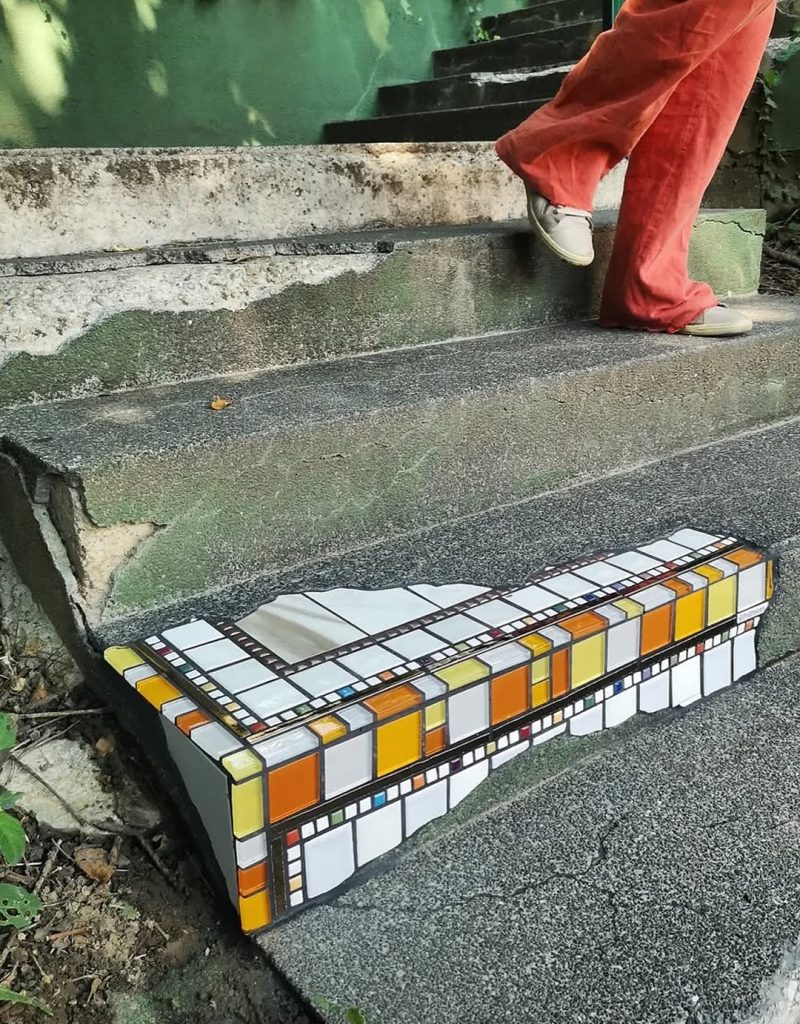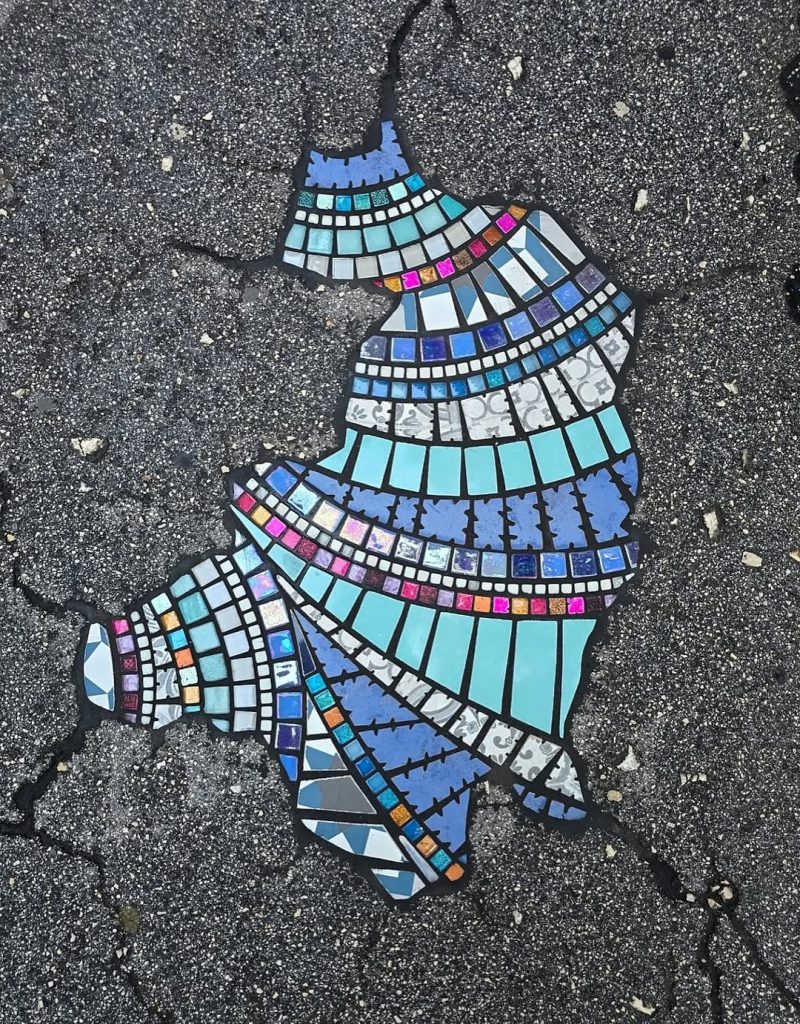Healing the Streets: How French Artist Ememem Turns Cracked Pavements into Living Art
In the quiet corners of European cities, where time and traffic have left their marks, one anonymous artist is mending the wounds of the streets — not with asphalt or cement, but with art. The artist known simply as Ememem has become a quiet legend for transforming broken pavements, cracked walls, and potholes into dazzling mosaics that shimmer with color and care. His project, called Healing the Streets, is both poetic and practical — a gentle act of rebellion against decay, and a statement about the beauty that can grow from imperfection.

Ememem calls this process flacking, a playful twist on the French word flaque, meaning “puddle.” The idea is simple yet powerful: to fill the city’s cracks with life. Each piece is a carefully arranged mosaic made from ceramic, glass, and wood, fitted precisely into the broken spot. What once looked like damage becomes a patchwork of patterns, each unique, each telling a small story about the place it was born. The result is a blend of street repair and fine art — a reminder that healing, whether of a road or a soul, doesn’t always need to erase the scars.

Unlike graffiti or large murals, flacking doesn’t demand attention. It waits to be discovered. Passersby might suddenly notice a splash of color underfoot — a broken corner reborn with intricate tiles, some reflecting light, others carrying the faint warmth of hand-painted motifs. There’s something deeply human about it. Instead of covering up the city’s flaws, Ememem celebrates them. He doesn’t hide the cracks; he honors them.

What makes Ememem’s work even more fascinating is his anonymity. He often works late at night, avoiding recognition, slipping quietly through the streets of Lyon — his home city — and beyond. Over the years, his mosaics have appeared across France, Italy, Spain, Germany, and even in parts of Scandinavia. Locals wake up to find a dull, cracked sidewalk transformed into something unexpectedly beautiful. Children point at it. Strangers stop to take pictures. For a brief moment, the rush of city life slows down, and people simply look — really look — at what’s beneath their feet.

Each mosaic has its own rhythm, color, and feeling. Some are geometric, others whimsical, echoing the personality of the neighborhood. A dull industrial alley might get a burst of blue and orange tiles. A weathered brick wall might now carry soft, pastel ceramics that seem to glow in the morning sun. There’s no political message, no grand announcement — just a quiet gesture that says, “This too can be mended.”

The artist’s philosophy touches something universal. In a world obsessed with perfection, Ememem’s art whispers that beauty often lives in what’s broken. His mosaics are metaphors for repair — not just for the streets, but for people, cities, and the passage of time itself. When he fills a pothole with patterned glass, it becomes a small act of hope. It says the city still matters. The damage is not the end.

Over the years, Ememem’s Healing the Streets has turned into a movement of its own. Photos of his work circulate online under hashtags celebrating his artistry and the message behind it. Urban art festivals have invited him to leave his mark, and some cities have begun preserving his pieces instead of removing them. The world may never know who he truly is, but his art doesn’t need a name — it already speaks a language everyone understands: repair, love, and beauty in imperfection.

When you next walk down an old, cracked street, look closely. Somewhere beneath your steps, a little piece of art might be quietly healing the world.



